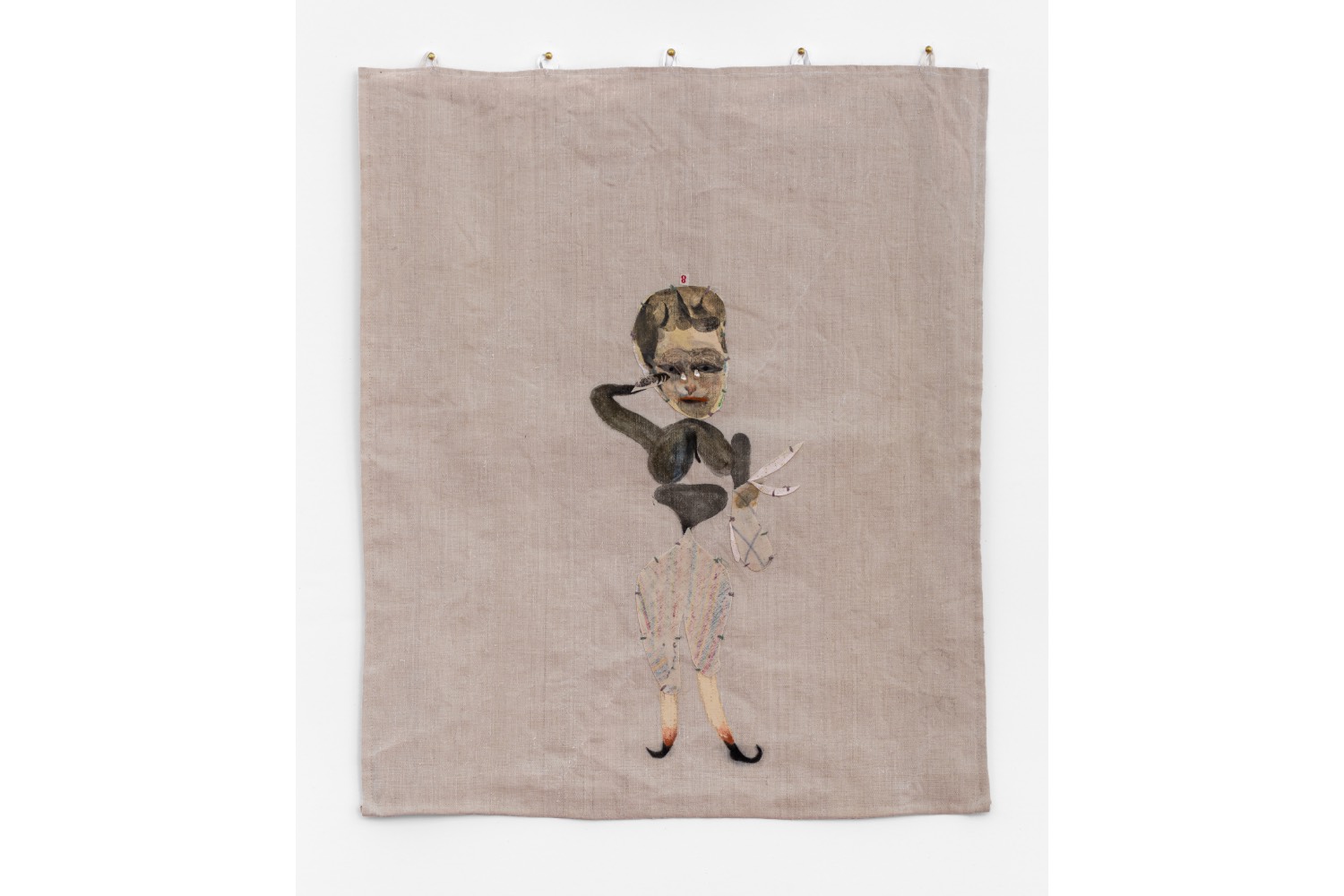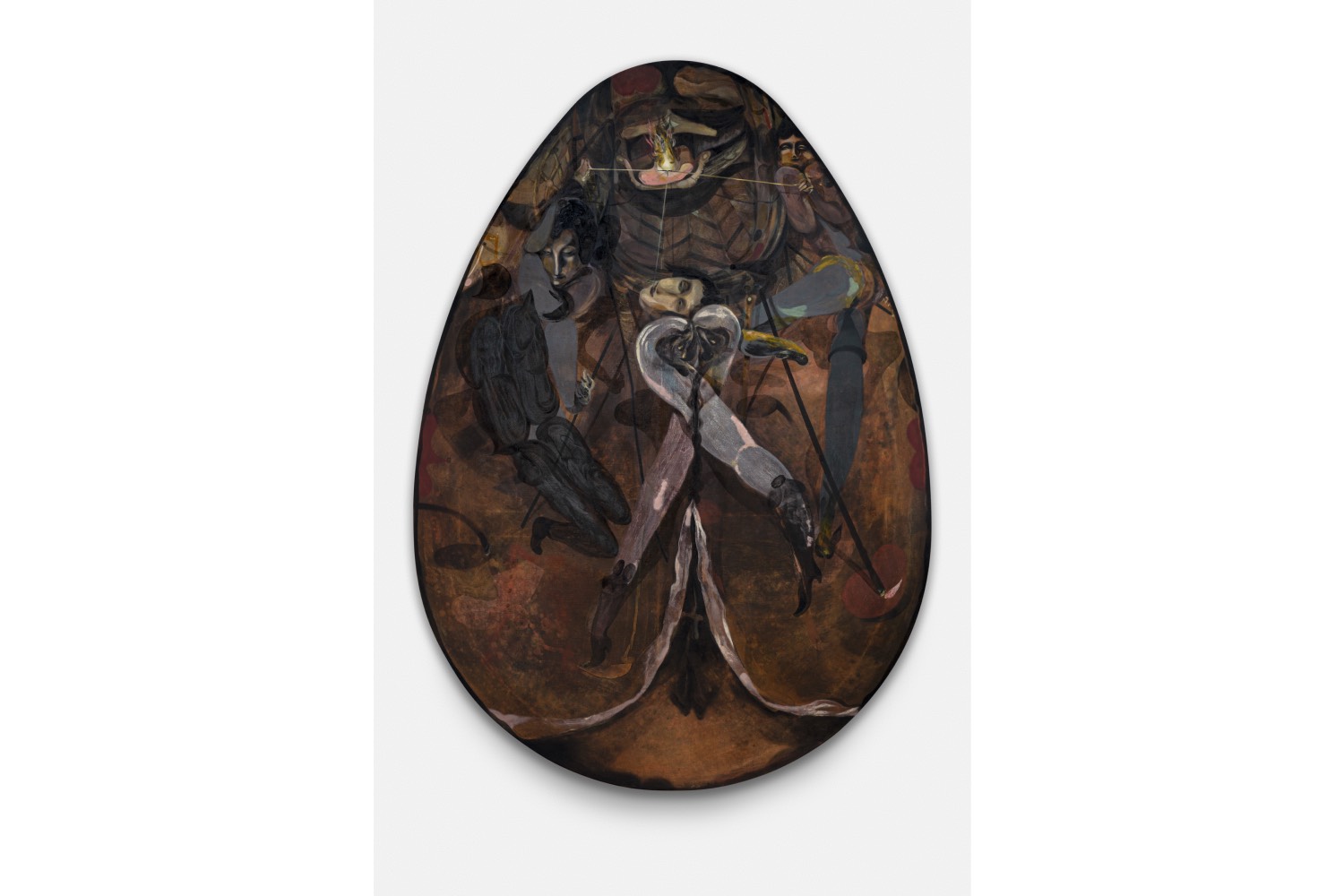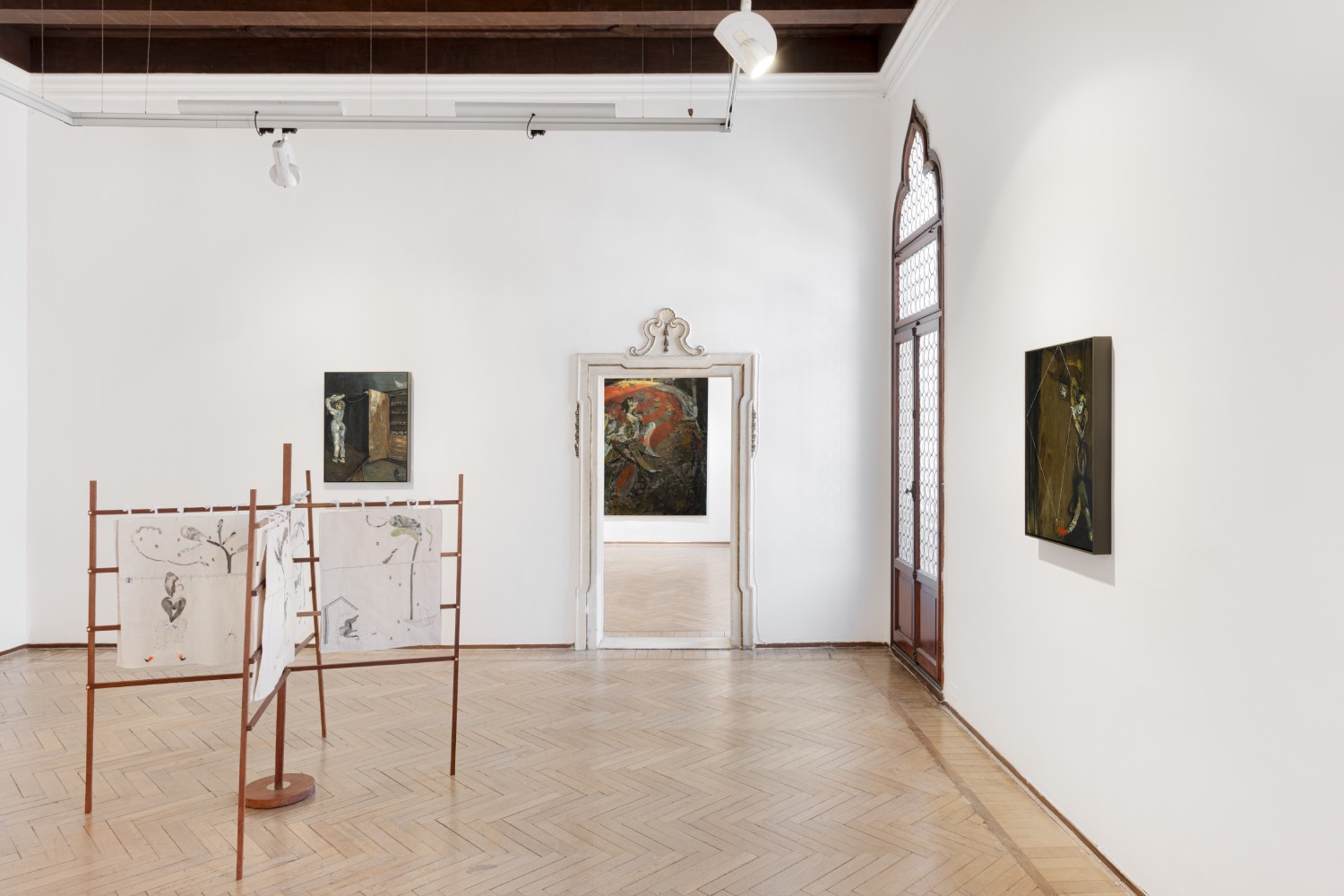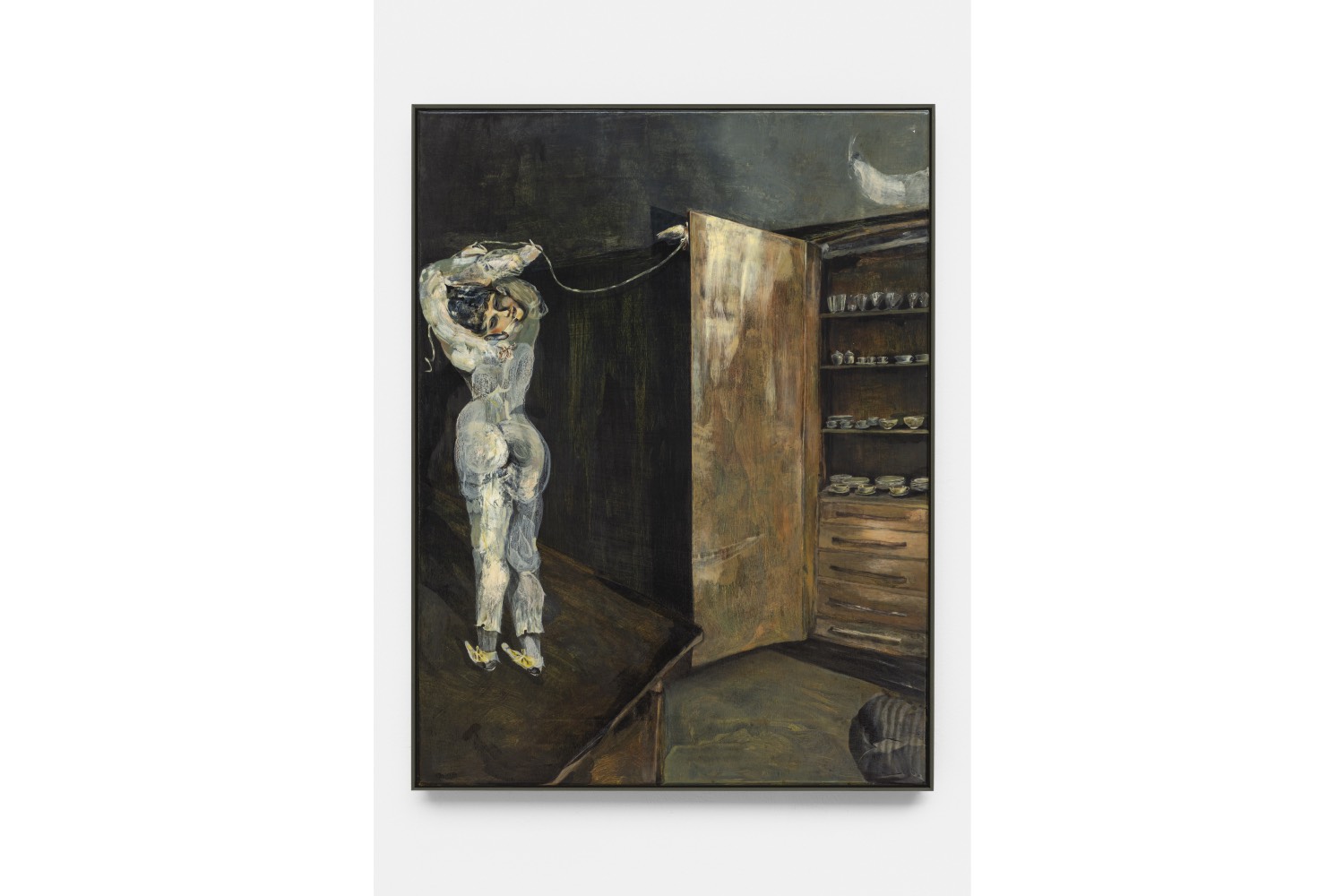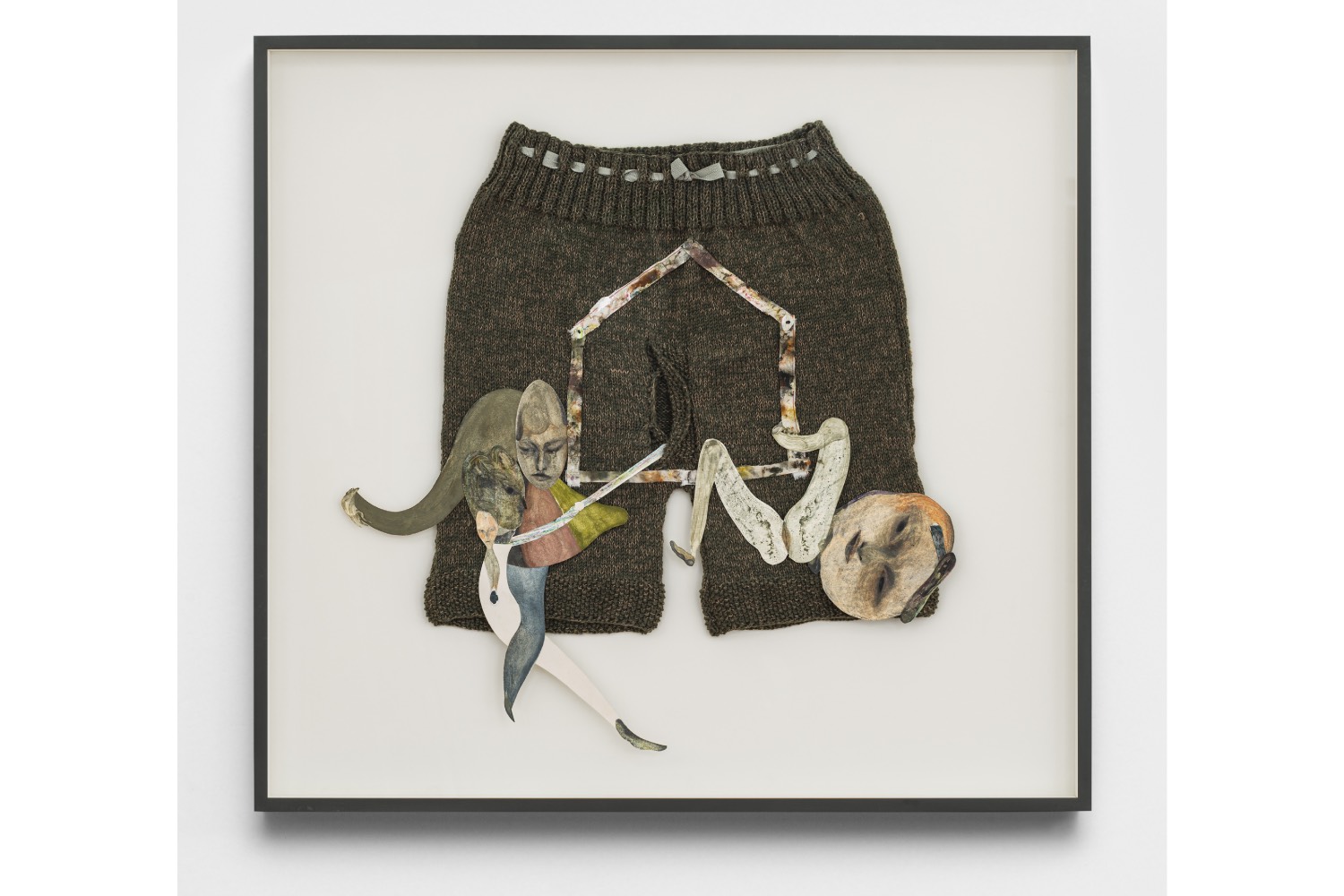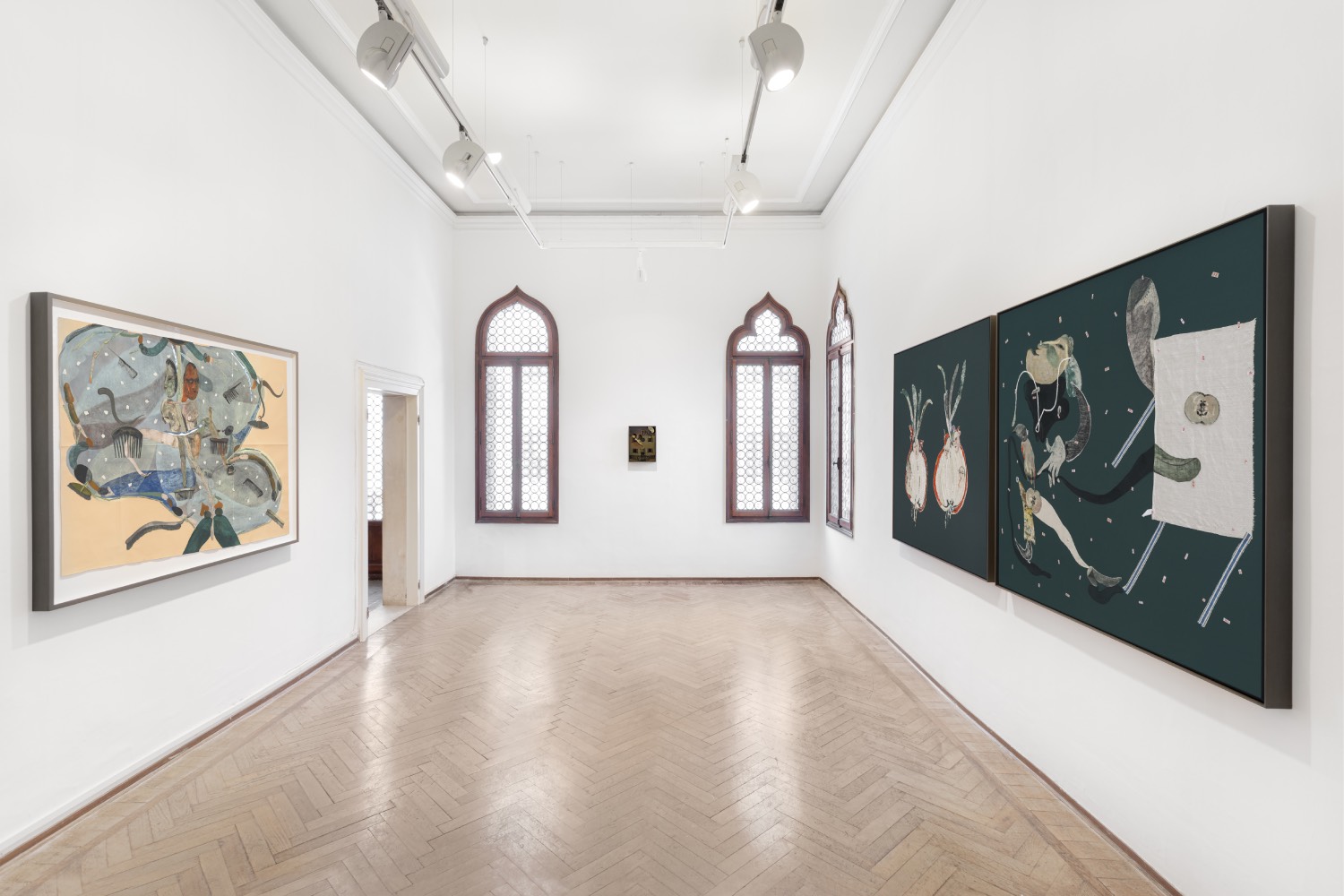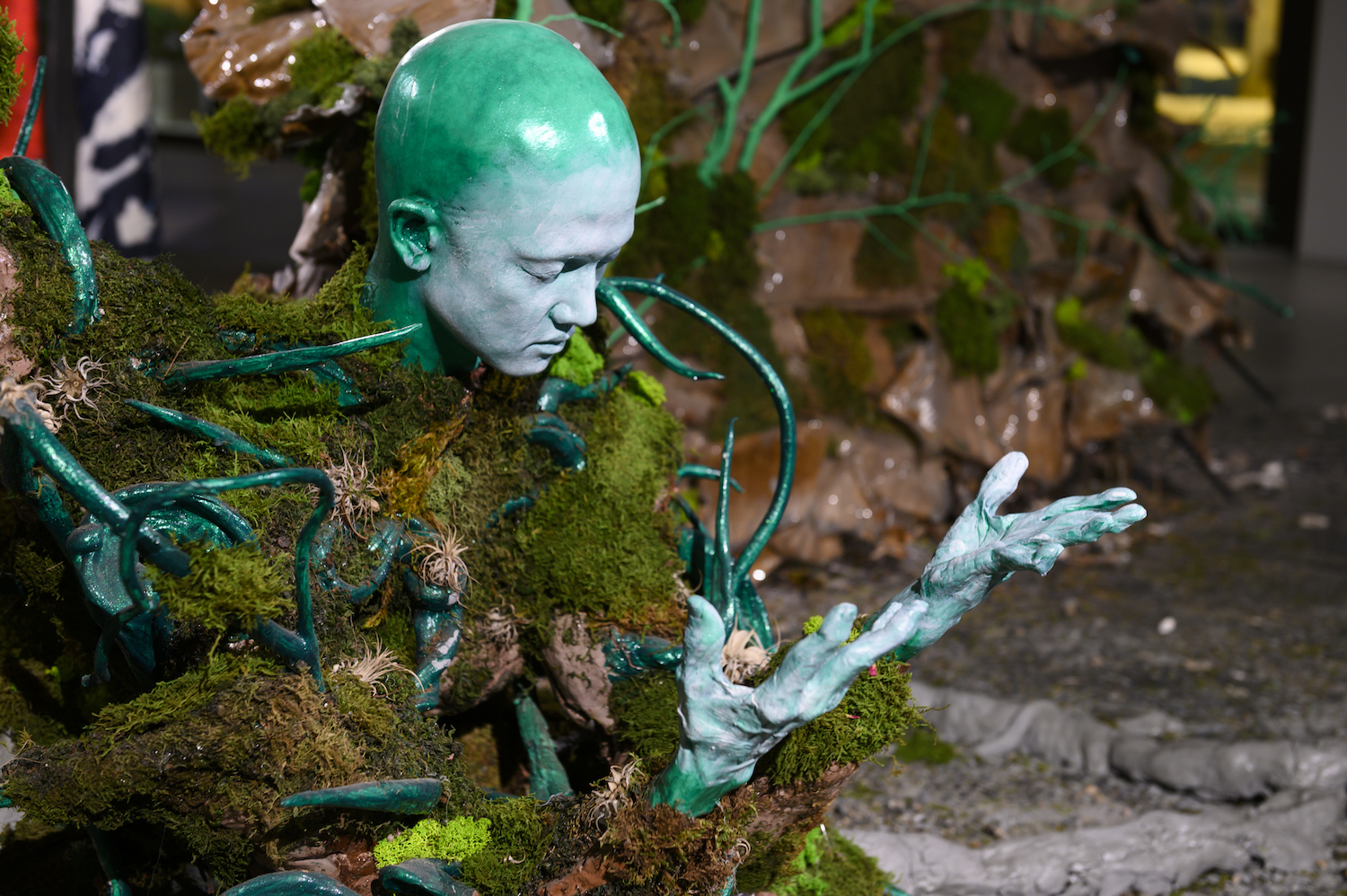As I leafed through the exhibition catalogue, carefully examining each page in search of clues that might help me better understand Guglielmo Castelli’s universe, I stumbled upon a quote scribbled on a scrap of paper amid countless sketches: “the ferocious balance.” This phrase lingered in my mind, providing an ideal lens for fully appreciating the artist’s unique approach to world-building. Castelli’s “Improving Songs for Anxious Children” serves as an interstellar guide for nostalgic hearts, leading us through the wistful yet meticulously structured emotional journey of youth.
Hosted at Fondazione Bevilacqua la Masa’s Palazzetto Tito in Venice, the exhibition centers on the concept of childhood as the origin of discovery. The title, inspired by an overlooked kid’s book from the early twentieth century, warns against carelessness, distraction, lying, and other supposedly immoral behaviors in children. The book’s elusive nature — as there’s no trace of it online — served as a starting point for creating a folkloristic, neglected tale that continues to unfold with each painting. Castelli, as our sole guide, invites us to dive into his interpretation and let our imaginations soar. As we move through the exhibition, each piece uncovers more intricate stories, introducing new characters or linking them to others we might have encountered in a distant time. The overall experience feels like discovering a lost fable, in which each work serves as a chapter that adds depth to the whimsical, enchanted world Castelli has crafted, making the viewer an active participant in piecing together his intricate narrative.
Castelli’s paintings feature strange, beguiling figures in various states of play or solitary contemplation. His color palette — muddy shades of yellow, brown, and rusty red — and deliberately skewed anatomical proportions challenge the viewer to uncover various aesthetic relationships. Each piece serves as the skeleton of a story, inviting us to envision anecdotes and creatures within Castelli’s universe. This fiction is then enhanced by aloof, distant personalities resembling surreal puppets, reflecting the artist’s background in stage design. This theatrical connection imbues the show with a childlike atmosphere, reminiscent of a circus or a marionette show. Navigating the space feels like stepping into a forgotten legend or a bedtime story, or like being transported onto the set of Matteo Garrone’s Pinocchio (2019). The puppets’ double entendre — representing both playful innocence and a darker undertone — fosters diverse, layered interpretations of these dream-like fairytales. Despite the grim setting, the presentation is polished and meticulous, creating a striking contrast with the chaotic scenes choreographed within the framed canvas of each work.
This deliberate storyline, enhanced with unexpected twists, embraces a nonlinear, elliptical approach. Castelli’s work constantly alludes to narration, demanding to be read between the lines. He paints in progressive, disciplined strata — a fluid yet calculated process. Like the onions depicted in Lacrimal Apparatus (2024), each painting reveals layers upon layers, inviting viewers to delve deeper into its essence. The stratified technique is more than a method; it’s a symbolic act of peeling back the distinct experiences of childhood, each layer displaying hidden complexities and emotions. These elusive hints are mirrored in the exhibition space itself, which becomes an integral part of the storytelling. Windows with a texture like glass marbles reflect speckled light into the room, creating a dynamic interplay of light and shadow across an ethereal realm where logic and reason are suspended. This interaction adds depth to the vivid yet somber figures in the artist’s imaginary castles. Stepping into an ever-evolving, enchanted fable, each corner of the room discloses another chapter of Castelli’s tale.
The physicality of Castelli’s painting process is evident, with each coat of color and glaze creating a sculptural form that challenges conventional aesthetics. His works, heavy with nostalgia, swirl with shadows suggesting an undercurrent of unease. At the heart of this flawlessly crafted “circus” is the main attraction, Improving Songs for Anxious Children (2024), which perfectly encapsulates Castelli’s twisted creations. This centerpiece, bearing the title that set the tone for the show, serves as the emblematic coat of armor in the exhibition. Featuring textile panels painted and embroidered with images inspired by the story of the boy and the apple, it is displayed on a device resembling a laundry drying rack. These elements blend playfulness with sacred icons, reminiscent also of a Maypole game, while reflecting a poetic nostalgia. The piece intertwines childlike wonder with a grim, unsettling undertone, making it the quintessential representation of Castelli’s vision.
“Improving Songs for Anxious Children” is a nostalgic cry for a lost childhood, irrevocably altered by social media and technology. It counters today’s rapid online consumption culture, redirecting attention toward nurturing and developing a younger generation. In the show, Castelli blends the fragility of childhood with an exploration of morality, examining the thin boundary between innocence and violence. His iconographic cosmos — drawing from literature, theater, and scenography — creates a powerful visual language that suggests a sometimes ominously unsetteling longing for past times. It is an emotional and intellectual journey that resonates deeply, offering a poignant reflection on the complexities of childhood and the timeless struggle between fragility and resilience.

